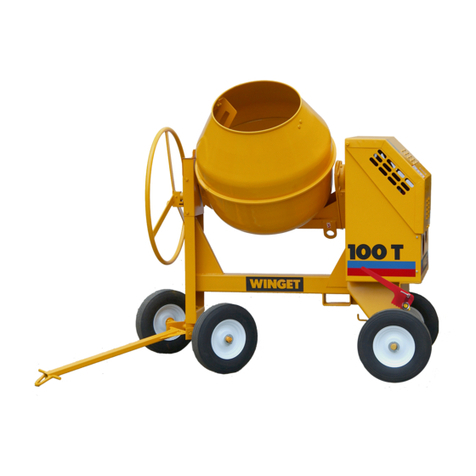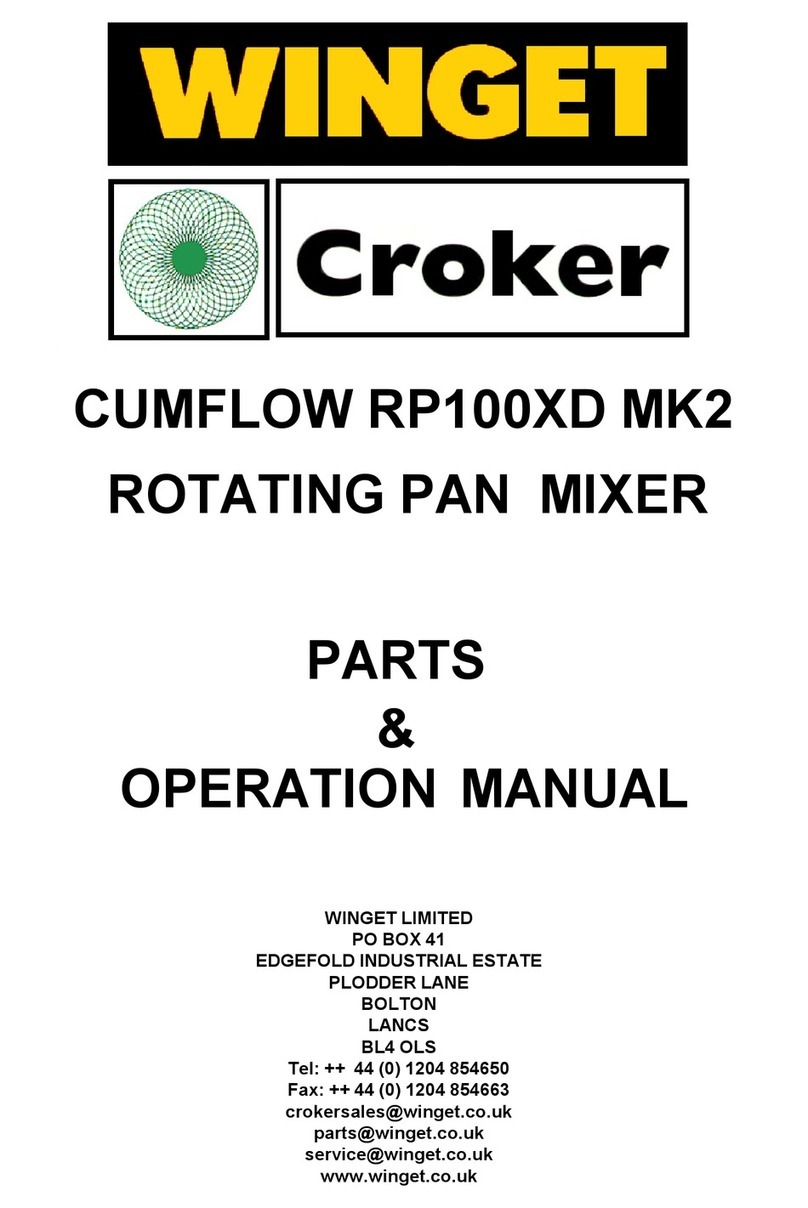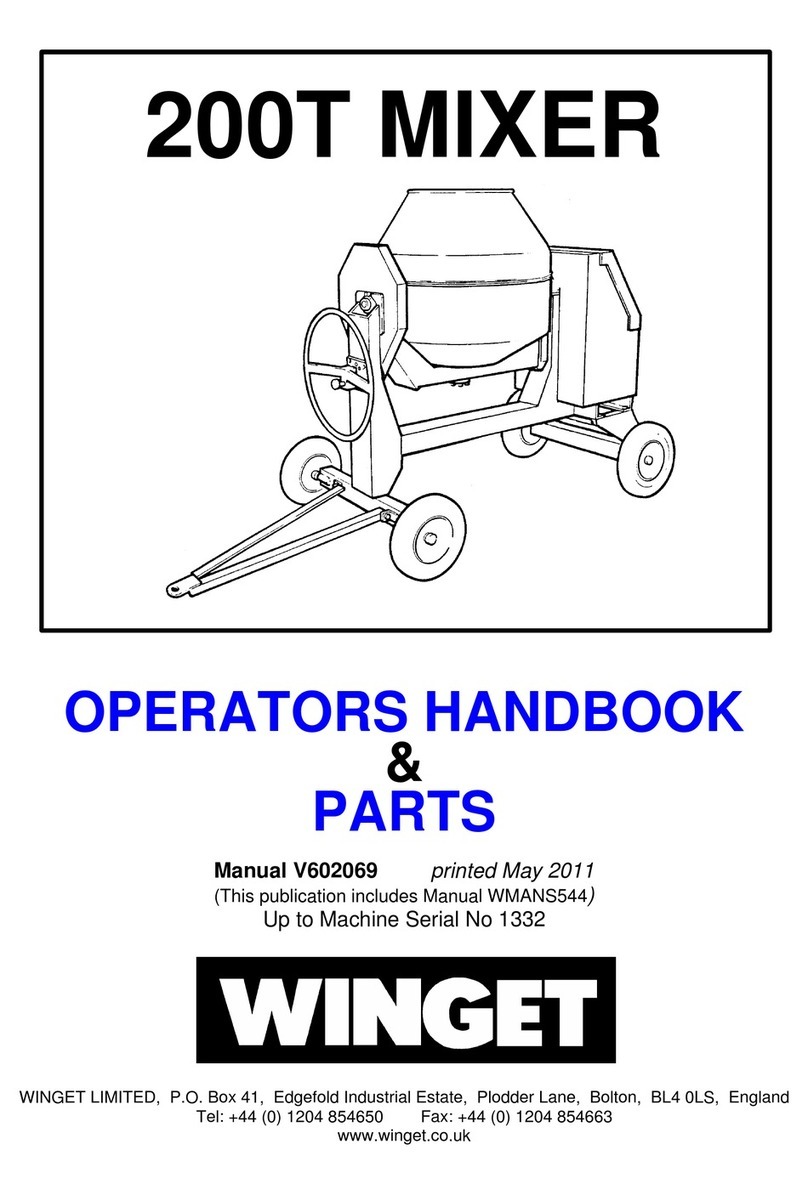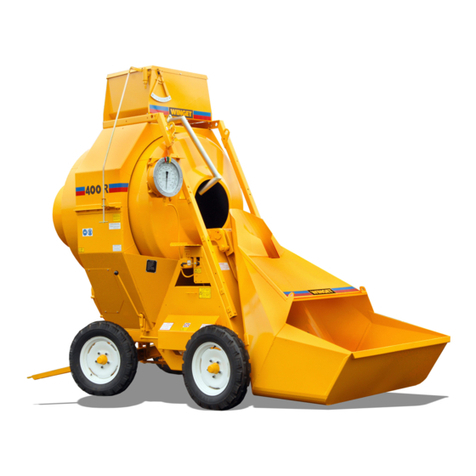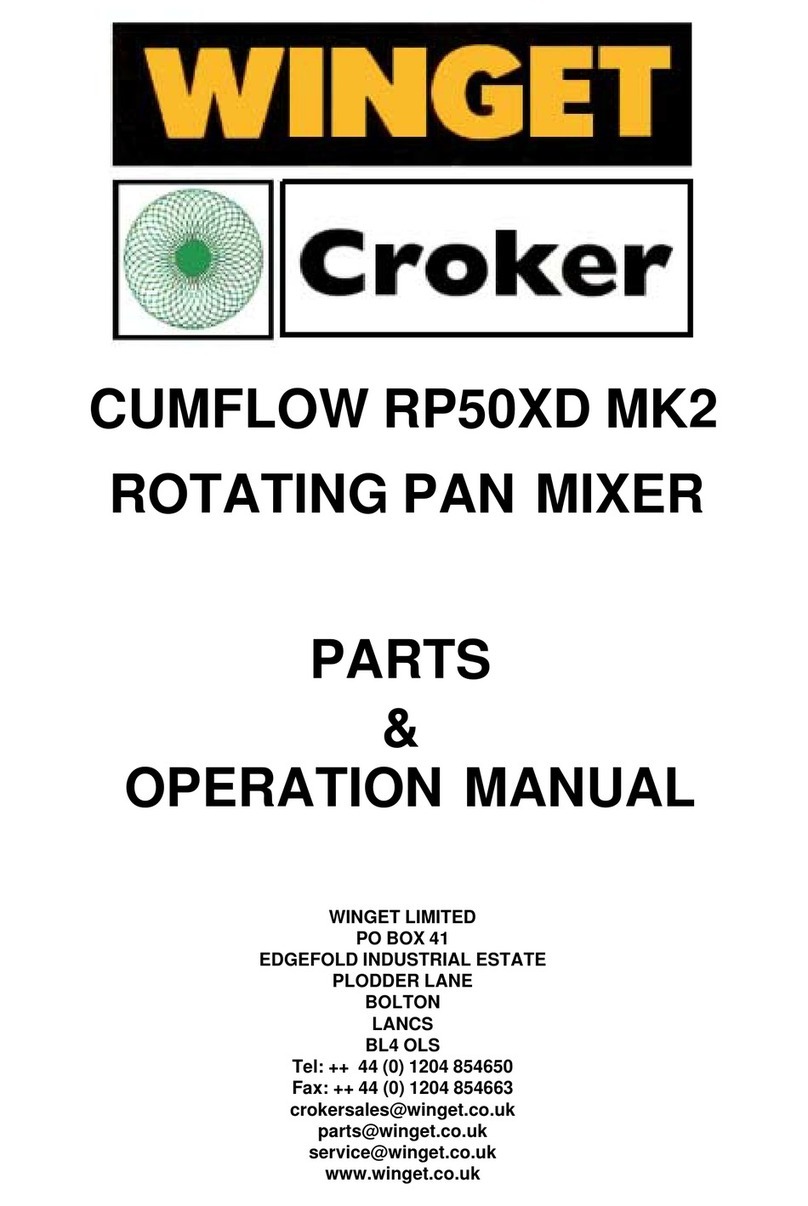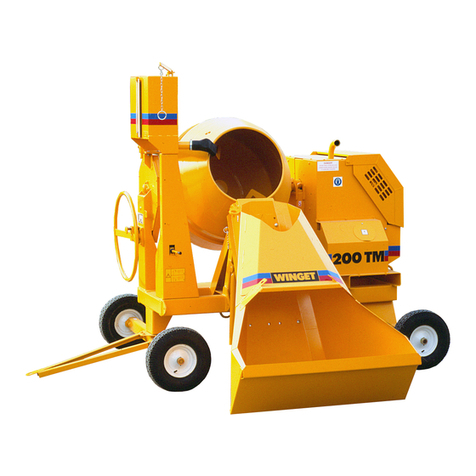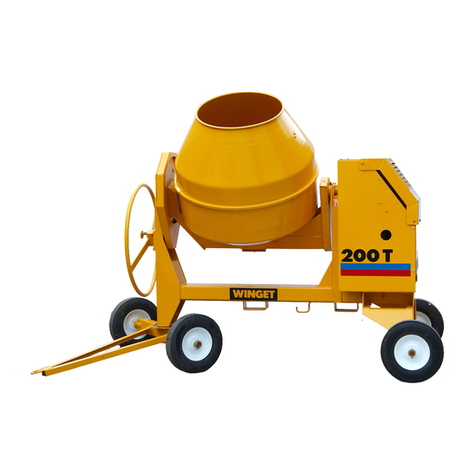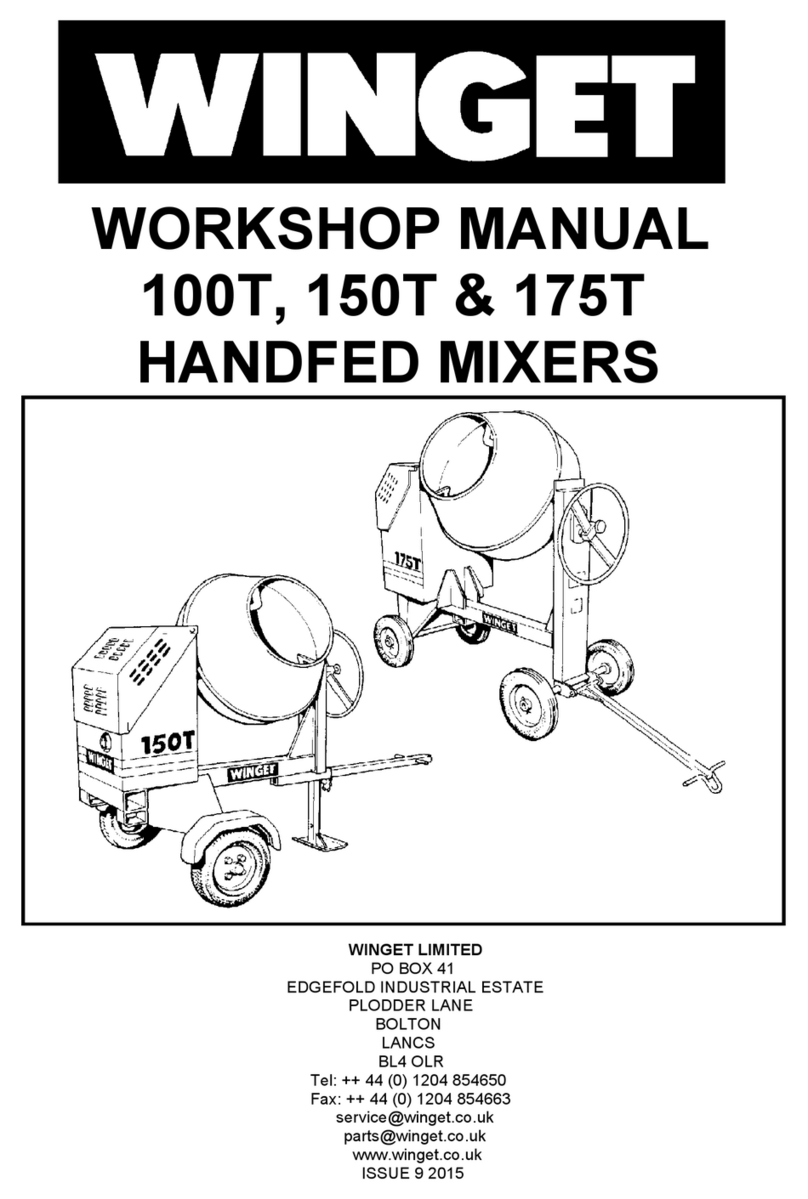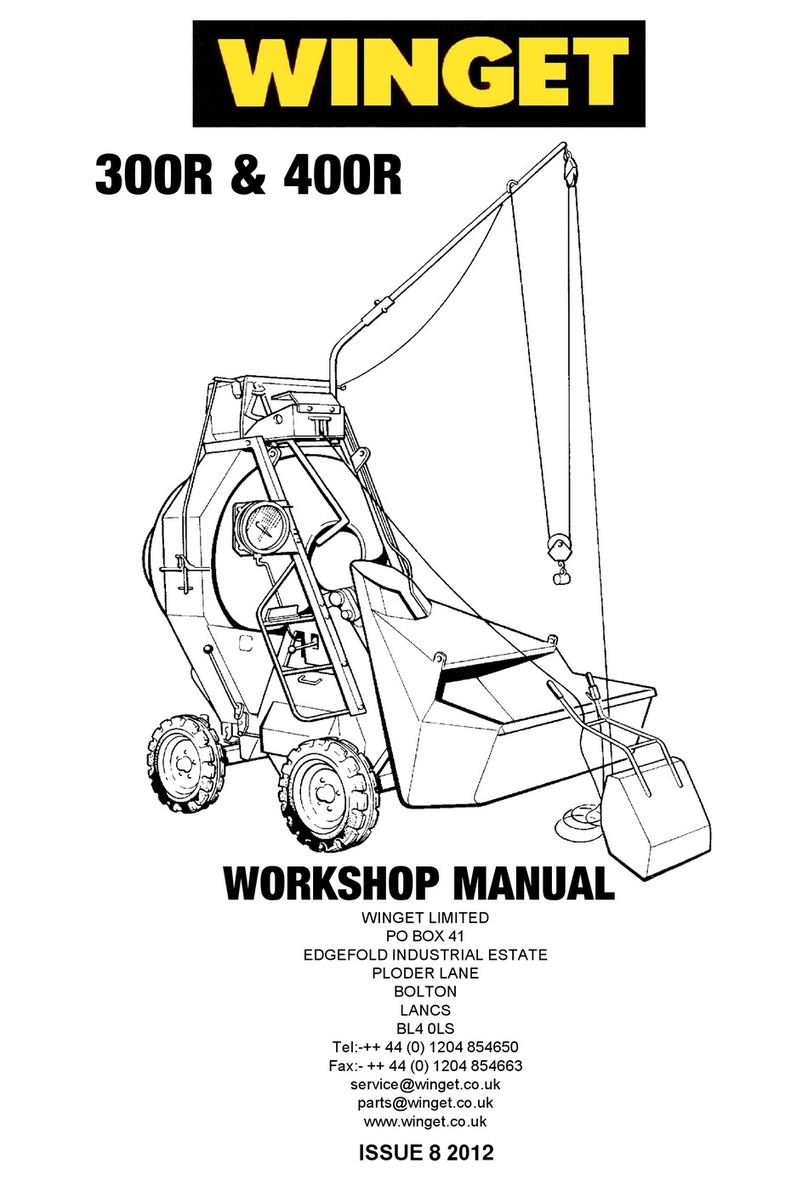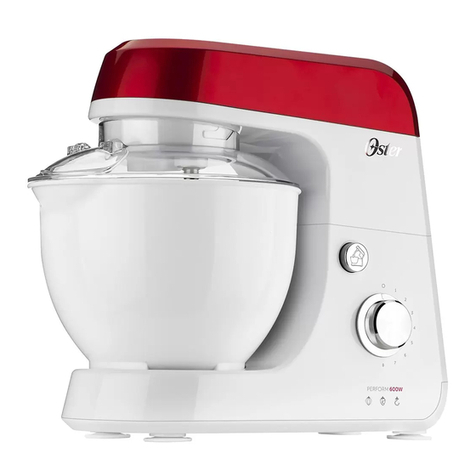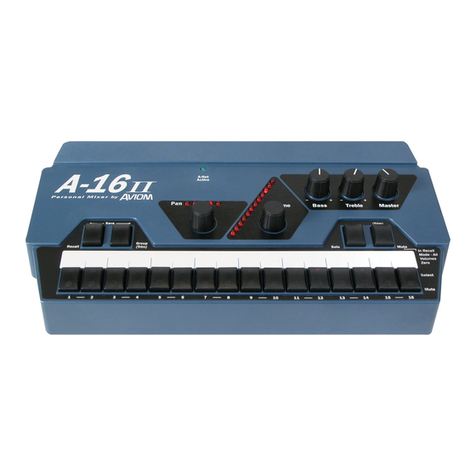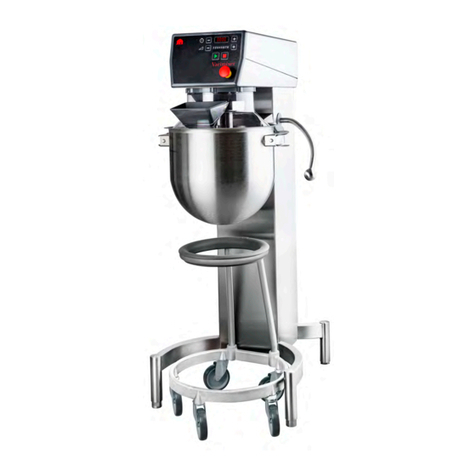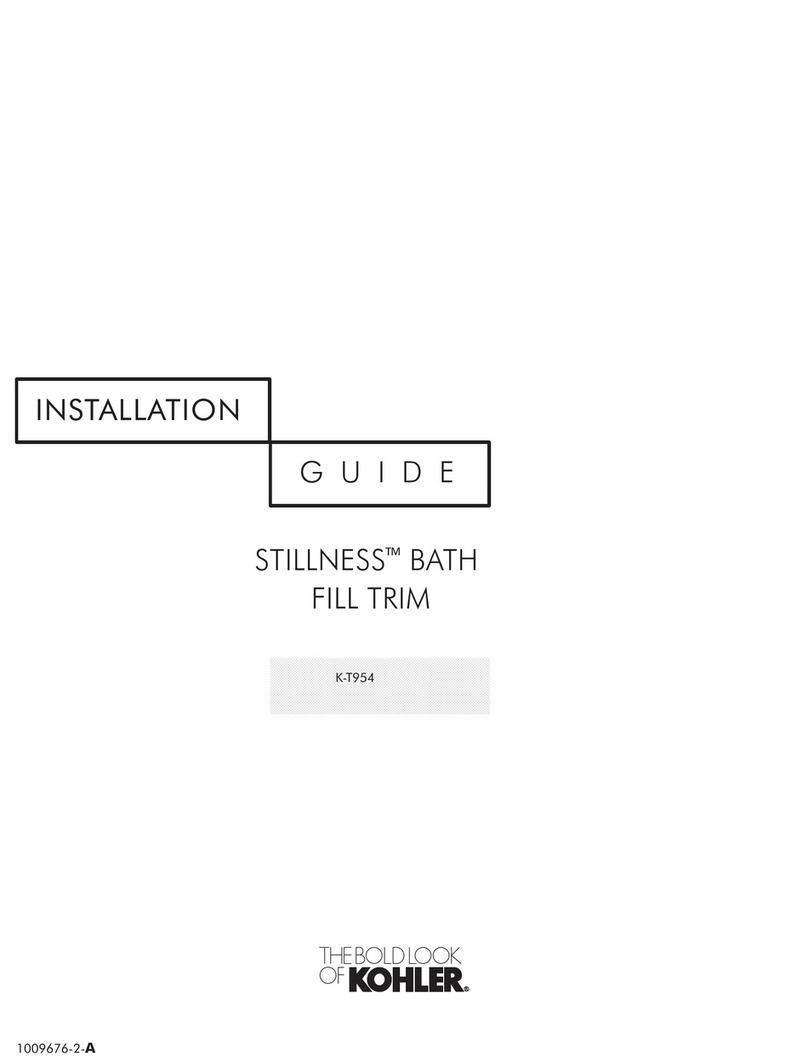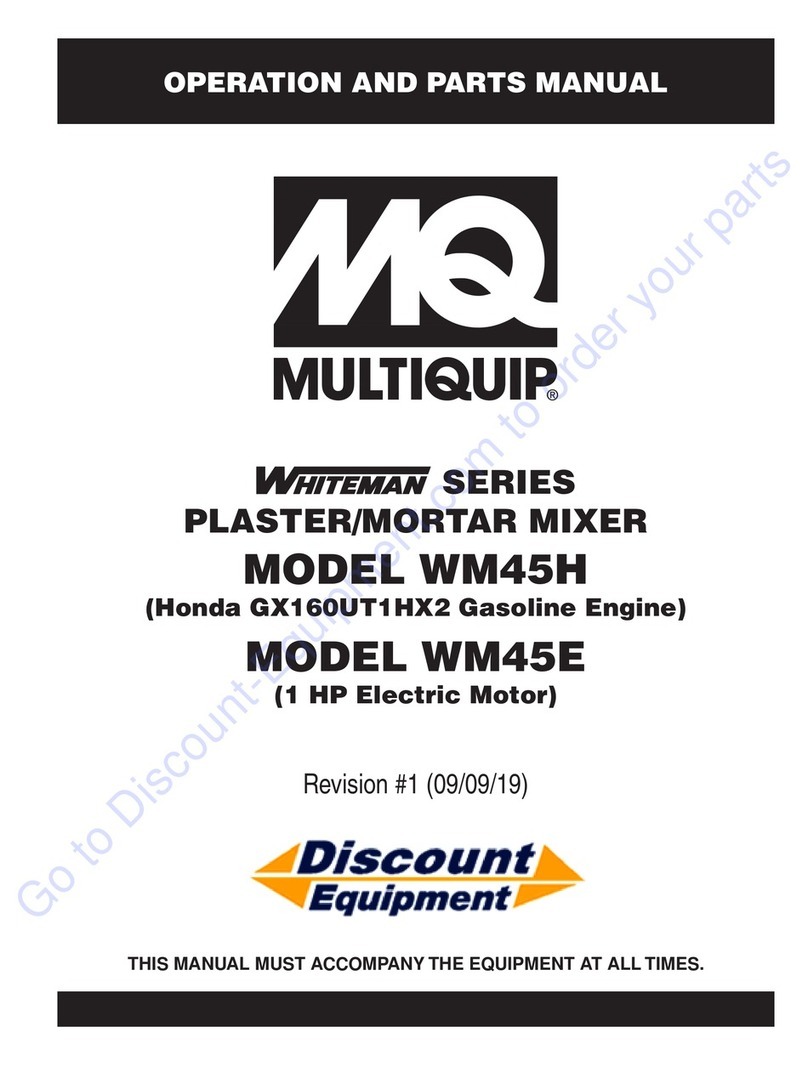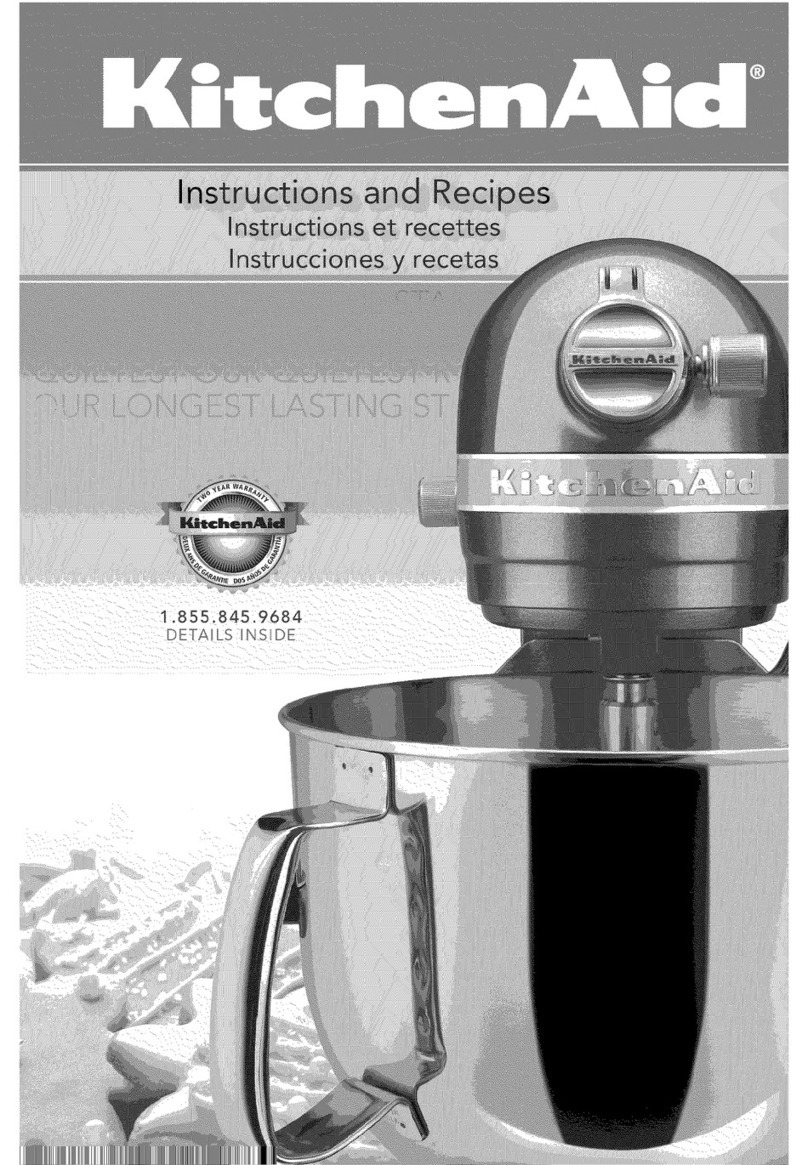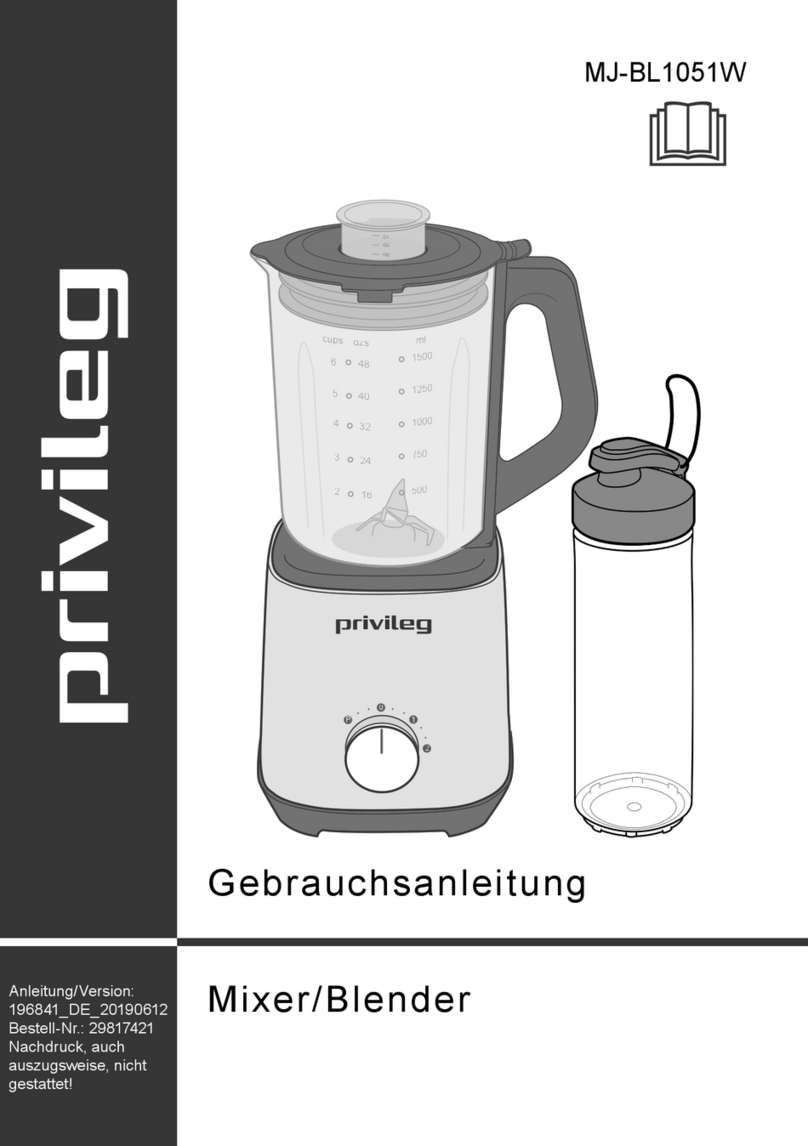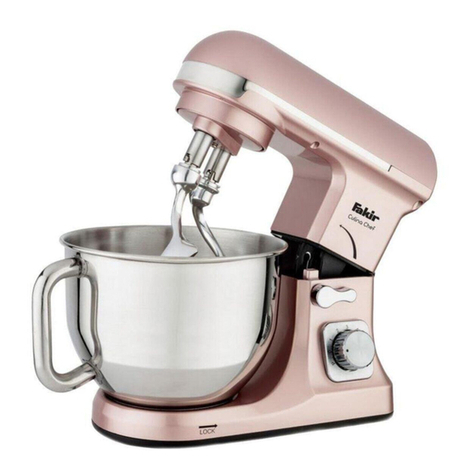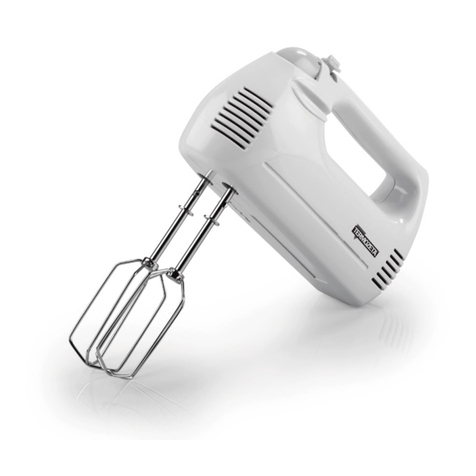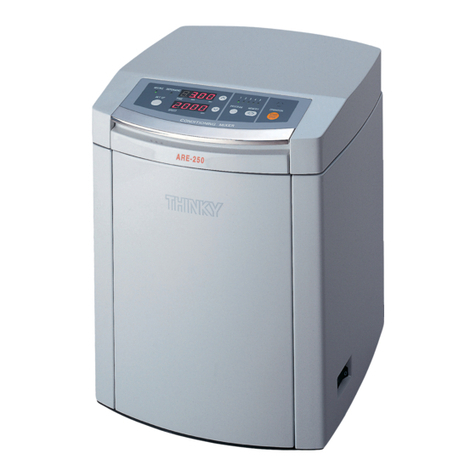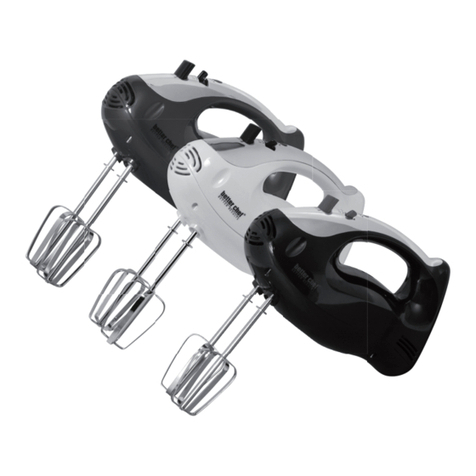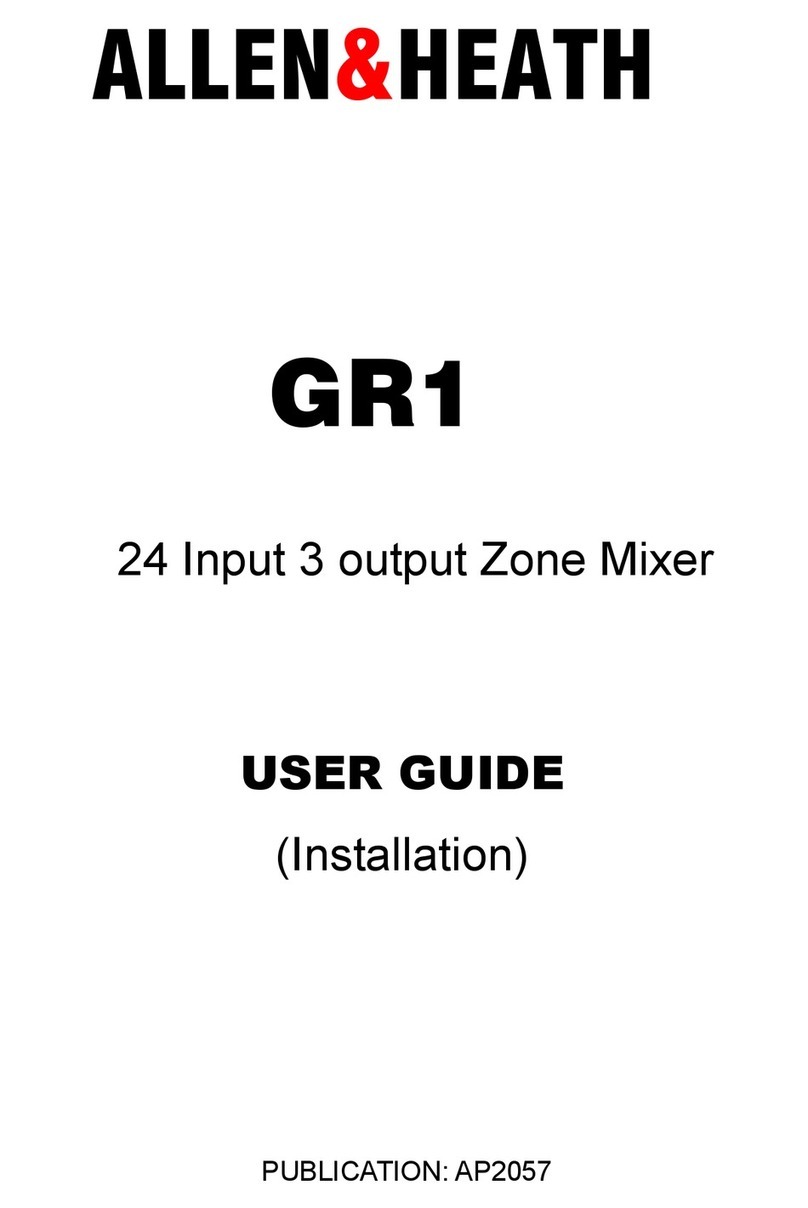
WORKSHOP MANUAL
Winget Hand Fed Mixers
Models: 200T
From 1998
Replacement of Drum Shaft, Bevel Gear and Bearings
Remove the drum as described previously and turn upside down so that the
assembly stands on the open mouth of the drum. Before removing the bevel gear
from the drum base use suitably sized circlip pliers and remove the large circlip
retaining the lower shaft bearing into the gear.
Remove the setscrews securing the bevel gear and shaft assembly to the drum
base, use two of the setscrews as jacking as screws utilising the threaded holes in
the bevel gear and jack the assembly out of the base.
With the assistance of suitable lifting equipment lift the assembly onto a suitable
supporting surface and using a soft faced hammer or mallet knock the shaft back
through the bevel gear. Support the shaft in a suitable soft jawed vice and remove
the smaller circlip from the end of the shaft retaining the upper drum bearing, using a
suitable drift or puller remove both bearings from the shaft. Clean all the
components.
Before fitting new bearings carefully remove the seals from the bearings and pack
the bearings with good quality grease, refit the seals, do not completely fill the
bearings with grease leave some room for expansion as the grease warms up in
service.
Fit the new bearings to the shaft and retain the upper smaller bearing using a new
circlip. Clean out the drum centre shaft housing and smear a little anti-seize
compound round the circumference of the upper bearing seat within the housing.
Place the bevel gear on the drum base and loosely retain with the setscrews and
washers, apply threadlock to the screw threads before inserting, smear a little anti-
seize compound round the circumference of the lower bearing seat in the bevel gear.
Lower the shaft through the bevel gear and using a suitable mallet or softfaced
hammer knock the shaft fully home, fit the large retaining circlip and finger tighten
the setscrews. Check the gap between the gear and drum base, using a
combination of the 2.00, 1.00 & 0.5mm shims pack the gap in 6/8 positions around
the circumference of the gear. Tighten the retaining screws. Seal around the
circumference of the gear using a suitable sealer. (Once the setscrews are tight it
may be necessary to give the end of the shaft a sharp tap with a soft faced mallet to
seat the bearings)
Drum Cone Replacement.
Clean hardened concrete or mortar from around the drum clip and the bolts securing
the drum blades. Remove the bolts securing the blades to the drum cone and
slacken the bolts through the base. Due to the corrosive action of concrete and
mortar it may be necessary to cut through the old bolts using oxy-acetylene
equipment. Be aware that hot concrete can “explode” violently spitting concrete -
wear suitable eye protection and protective clothing.

